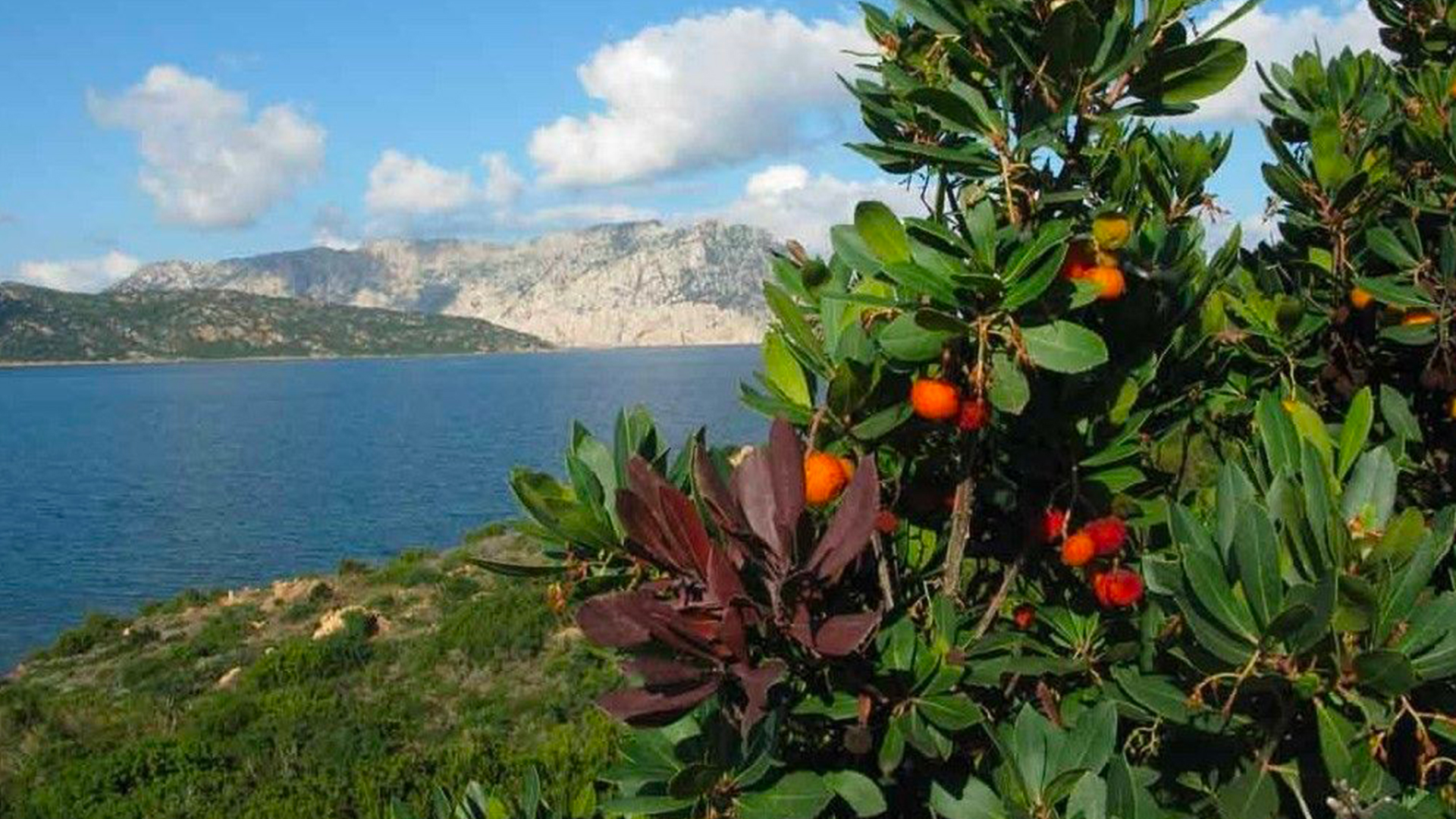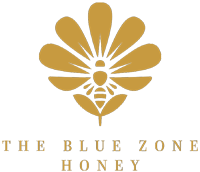The Blue Zone Honey

A method for caring many human issues
In recent years scientists have begun to look into whether these traditional uses of honey have any merit in our current modern first aid kit. One of the discoveries they’ve made is that not all honey is created equal. Different honey has different properties depending on the flowers the bees harvest the nectar from and the health of the area where they fly, but in particular is important the method of beekeeping: having healthy wax and not feeding artificially bees allow the final product of these bees to be heathier and more effective. And although the size and number of research studies are still small for all the honeys (and especially for the strawberry tree one), there are fairly good indications that our sardinian honey really is a little bit special.
Use of Strawberry Tree (Arbutus unedo) as a Source of Functional Fractions with Biological Activities
Arbutus unedo, commonly named ‘strawberry tree’ (ST), is a Mediterranean native plant that represents a relevant source of biologically active fractions and compounds. ST fruits, traditionally used with culinary and medicinal purposes, along with other components (leaves, roots, honeys, etc.), have been subjected to varied extraction procedures to obtain enriched and bioactive products. This work reviewed the scientific literature, searching for studies that evaluated the potential health implications of ST fractions and attending to the tested biological activities (antioxidant, antiproliferative, hypoglycemic, immune-modulatory, antihypertensive, antimicrobial, etc.), the part of the tree, the experimental model, the specific bioactive compounds and the selected extraction protocol. Furthermore, the strengths and weaknesses of the current state of the published evidence were critically analysed. Although in vitro results demonstrated the potential of ST fractions, further research is encouraged in order to obtain in vivo evidence (animal and clinical studies), assess additional activities (hypocholesterolemic, microbiome-modulatory), maximize the use of advanced extraction technologies, purify and isolate specific bioactive compounds and broaden the analysis investigating phenolic and non-phenolic molecules and their bioavailability.
Protective Effects of Arbutus unedo L. Honey in the Alleviation of Irinotecan-Induced Cytogenetic Damage in Human Lymphocytes—An In Vitro Study
Strawberry tree (Arbutus unedo L.) honey (STH) has been used since ancient times as a folk medicine remedy, especially in certain Mediterranean countries. This honey, rich in phenolic content, is well recognized for its antioxidant, anti-inflammatory, and antimicrobial activities, and is used for the treatment of skin lesions as well as gastrointestinal and respiratory disorders. This study investigated whether STH alleviates genome damage in human peripheral blood lymphocytes produced by the cytotoxic drug irinotecan. The phenolic profile of STH was previously estimated by ultra-high-performance liquid chromatography coupled to a linear ion trap–Orbitrap hybrid mass spectrometer. The effects of STH were evaluated at three concentrations (1×, 5×, and 10×), based on the daily consumption of the honey by an adult person. After 2 h of in vitro exposure, standard lymphocyte cultures for the analysis of chromosome aberrations and the cytokinesis-block micronucleus cytome assay were established. Our results demonstrate that STH offered remarkable geno- and cytoprotection when administered with irinotecan. These findings are relevant for drawing preliminary conclusions regarding the in vitro safety of the tested honey. However, further studies are needed with the application of more complex experimental models.
The phenolic profile of strawberry tree (Arbutus unedo L.) honey
Despite of the many beneficial health effects of strawberry tree (Arbutus unedo L.) honey due to its strong antioxidant activity derived mostly from polyphenols, a detailed phenolic profile has not been previously studied. The aims of this study were to identify the phenolic compounds, determine the total phenolic content (TPC) and evaluate the radical scavenging activity (RSA) of strawberry tree honey from south Croatia. Fifty-two polyphenolics (twenty-seven phenolic acids and twenty-five flavonoids) were identified using ultra-high-performance liquid chromatograph (UHPLC) coupled to a hybrid mass spectrometer (LTQ Orbitrap MS). Our overall results point to higher TPC (1038 mg gallic acid equivalents per kg of honey) and stronger RSA (3.32 mmol Trolox equivalents per kg of honey) compared to other monofloral honeys. Due to the presence of large quantities of polyphenolic compounds, strawberry tree honey may have great potential as a health promoting food.
Strawberry-tree (Arbutus unedo L.) honey is expensive and difficult to characterize by melissopalinology. This study aimed to authenticate strawberry-tree (A. unedo L.) honeys from southern Europe, determining arbutin, groups of polyphenols, volatile and semivolatile compounds, as well as biological activities such as trolox equivalent antioxidant capacity, antioxidant activities against both hydroxyl (AOA) and superoxide radicals (SRS), oxygen radical absorbance capacity, anti-inflammatory activity, and antimicrobial activity against 7 microorganisms (Escherichia coli, Streptococcus mutans, Staphylococcus aureus, Aspergillus flavus, Aspergillus niger, Fusarium sp., and Penicillium commune). Arbutin, analyzed using HPLC-UV, was quantified in 83% of the samples. Polyphenols' contents were high. Norisoprenoids and benzene derivatives were the major compounds determined using gas chromatography-mass spectrometry. Theobromine was detected in 67% of samples. 2,6,6-Trimetyl-4-oxo-2-cyclohexen-1-carboxaldehyde, 3,4,5 trimethylphenol and 2-hydroxycyclopent-2-en-1-one were proposed as potential strawberry-tree floral markers. Antioxidant and anti-inflammatory activities were significant. Honeys’ extracts showed higher AOA and SRS, and better antimicrobial activities than the honeys. This study highlights the potential of strawberry-tree honeys and/or their phenolic extracts for food, pharmaceutical and cosmetic uses.
Strawberry-Tree Honey Induces Growth Inhibition of Human Colon Cancer Cells and Increases ROS Generation: A Comparison with Manuka Honey
Honey is a natural product known to modulate several biological activities including cancer. The aim of the present study was to examine the phytochemical content and the antioxidant activity of Strawberry tree (Arbutus unedo) honey (STH) and its cytotoxic properties against human colon adenocarcinoma (HCT-116) and metastatic (LoVo) cell lines in comparison with Manuka (Leptospermum scoparium) honey (MH). Several unifloral STH and MH were analyzed for their phenolic, flavonoid, amino acid and protein contents, as well as their radical scavenging activities. STH from the Berchidda area showed the highest amount of phenolic, flavonoid, amino acid and protein content, and antioxidant capacity compared to MH. Both STH and MH induced cytotoxicity and cell death in a dose- and time-dependent manner in HCT-116 and LoVo cells, with less toxicity on non-cancer cells. Compared to MH, STH showed more effect at lower concentrations on HCT-116 and LoVo cells. In addition, both honeys increased intracellular reactive oxygen species (ROS) generation. In HCT-116 cells, STH and MH induced similar ROS production but in LoVo cells STH induced a higher percentage of ROS compared to MH. Our results indicate that STH and MH can induce cell growth inhibition and ROS generation in colon adenocarcinoma and metastatic cells, which could be due to the presence of phytochemicals with antioxidant properties. These preliminary results are interesting and suggest a potential chemopreventive action which could be useful for further studies in order to develop chemopreventive agents for colon cancer.
Beneficial effects of strawberry tree (Arbutus unedo L.) honey supplementation in men
Strawberry tree honey is known for being rich in total phenols and its high antioxidant and antiradical activity. Apart from phenols, various major and trace elements can affect its antioxidant activity. The aim of this pilot study was to assess the beneficial effects of short-term supplementation of a usual dose of strawberry tree honey (from Pelješac peninsula, Croatia) on blood and urine parameters in men. Representative sampling of A. unedo L. honey was carried out directly at the place of production. It was followed by detailed melissopalynological and sensory assessment in order to verify honey authenticity as well as honey botanical and geographical origin. The honey was tested for the presence of toxic hydroquinone and its glycosylated form arbutin, naturally present in strawberry tree plants. In the tested sample, neither arbutin nor hydroquinone were detected by GC/MS. Participants included five adult healthy men aged 26-38 who consumed 70 g of honey dissolved in 200 ml of water daily for 14 days. After overnight fasting, blood and urine samples were collected before (day 0) and after (day 15) honey supplementation. The following parameters were determined: haematological indices, leukocytes, serum enzymes, CRP, chloride, phosphates, Fe, UIBC, and TIBC. Serum concentrations of Ca, Mg, K, Na, Cu, Mn, and Zn, whole blood Cd and Pb, and urine As were measured by ICP-MS. The activity of erythrocyte Cu, Zn-superoxide dismutase (SOD) and whole blood Se-glutathione-peroxidase (GPx) was determined by spectrophotometry. The honey supplementation increased serum Fe by 26% and decreased UIBC by 23%, TIBC by 11%, CRP by 10%, alanine aminotransferase (ALT) by 15%, aspartate aminotransferase (AST) and alkaline phosphatase (ALP) by 8%, and SOD and GPx activity by 6%. It increased platelet count by 8% and white blood cell count by 5%. No elevated levels of toxic elements were found. The supplementation did not affect other parameters. It should be noted, however, that participants were healthy men with no pathologies. This preliminary study suggests beneficial effects of strawberry tree honey consumption on antioxidative status, haematological indices, serum Fe and enzymes levels. Further studies on more participants and with longer experiment duration are needed.
Strawberry tree honey in combination with 5-fuorouracil enhances chemosensitivity in human colon adenocarcinoma cells
Colorectal cancer remains a challenging health burden worldwide. This study aimed to assess the potentiality of Strawberry tree honey (STH), a polyphenol-enriched food, to increase the effectiveness of 5-Fluorouracil (5-FU) in adenocarcinoma (HCT-116) and metastatic (LoVo) colon cancer cell lines. The combined treatment reduced cell viability and caused oxidative stress, by increasing oxidative biomarkers and decreasing antioxidant defence, in a more potent way compared to 5-FU alone. The expression of endoplasmic reticulum (ATF-6, XBP-1) and MAPK (p-p38 MAPK, p-ERK1/2) markers were also elevated after the combined treatment, enhancing the cell cycle arrest through the modulation of regulatory genes (i.e., cyclins and CDKs). Apoptotic gene (i.e., caspases) expressions were also increased after the combined treatment, while those of proliferation (i.e., EGFR), cell migration, invasion (i.e., matrix metallopeptidase) and epithelial–mesenchymal transition (N-cadherin, β-catenin) were suppressed. Finally, the combined treatment led cell metabolism towards a quiescent stage, by reducing mitochondrial respiration and glycolysis. In conclusion, this work represents an initial step to highlight the possibility to use STH in combination with 5-FU in the treatment of colon cancer, even if further in vitro an in vivo studies are strongly needed to confrm the possible chemo-sensitizing effects of STH.
